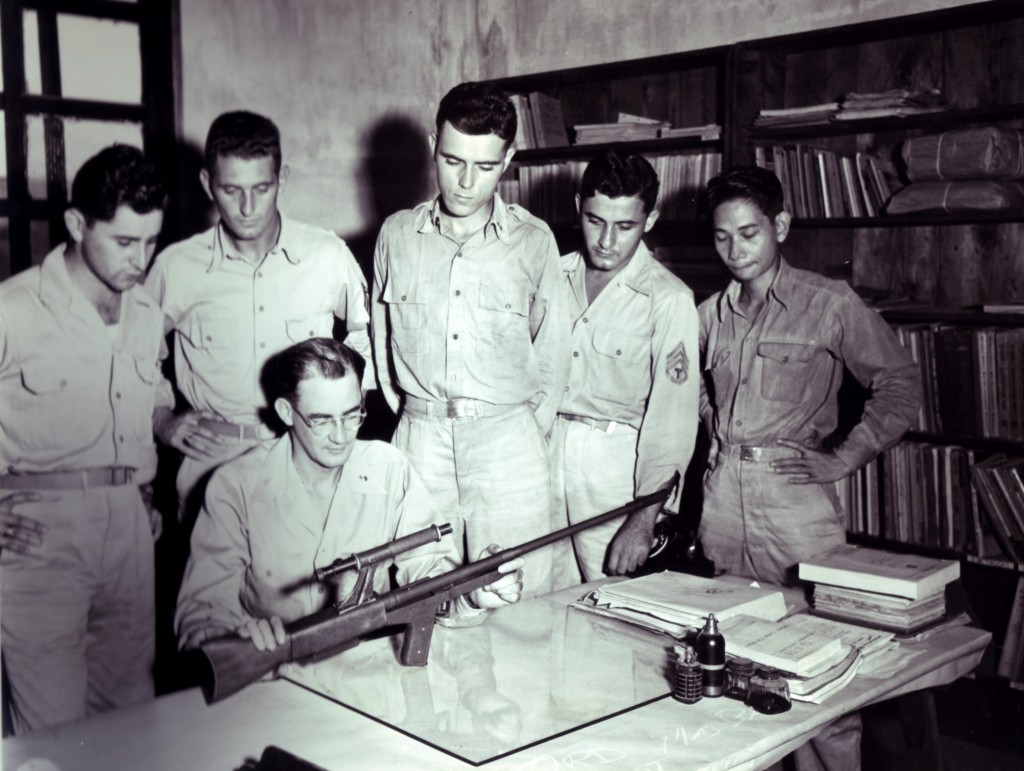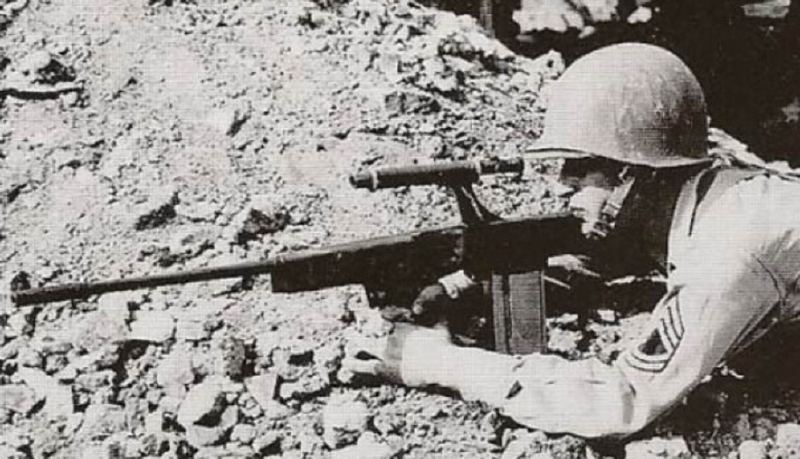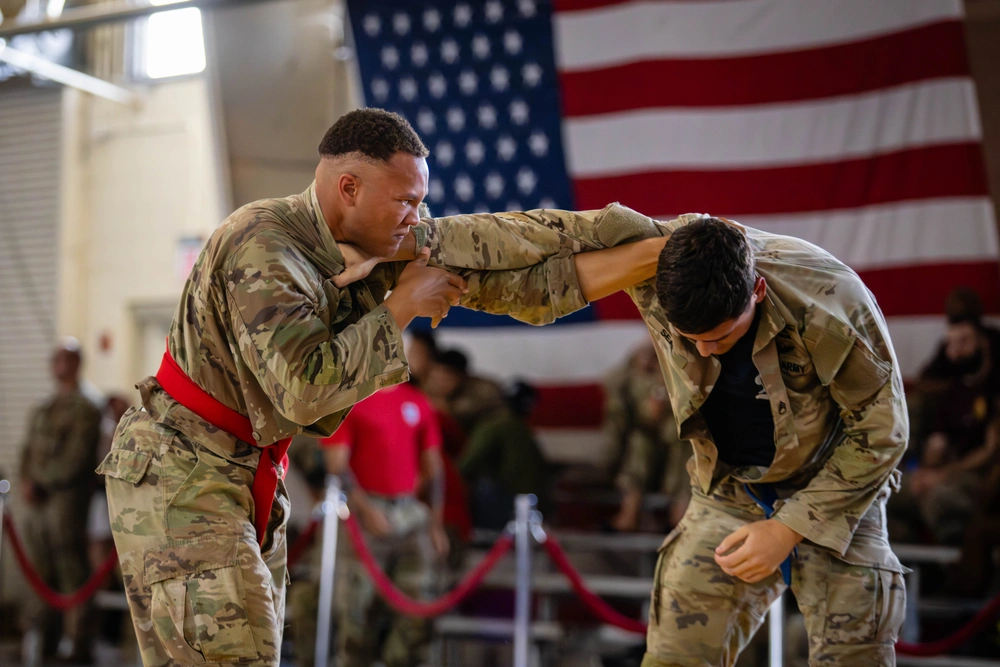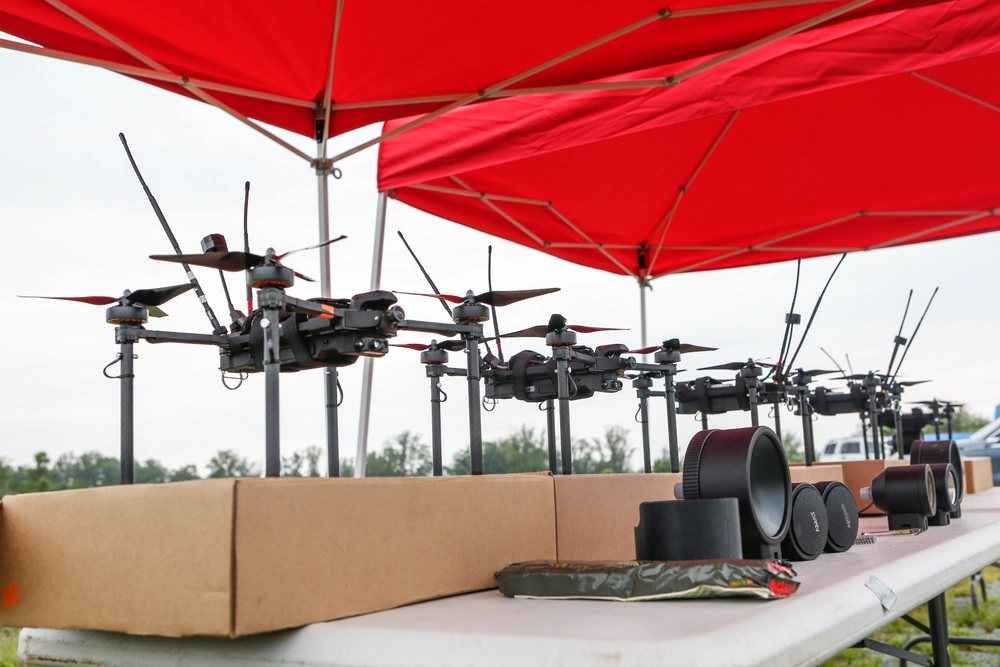Attempting to keep the historic BAR rifle relevant by turning it into a bullpup
- By Travis Pike
Share This Article

World War II weapons technology continues to influence modern small arms design. During and after World War II, there was a massive shift in firearm development, and technology evolved rapidly. Along the way, many ideas and guns fell through the cracks. Several attempts were made to prolong the life of WWII weapons and improve their handling by converting them to bullpups. This was especially true of the BAR.
The term bullpup may sound odd, but it’s an accepted term for a weapon design where the magazine and action are placed behind the pistol grip and trigger. This unique design allows for a significant reduction in the firearm’s length without compromising the barrel length. The result is a shorter rifle with uncompromised range and velocity.
There were three attempts to keep the BAR relevant and improve its handling by converting it into a bullpup platform or producing a bullpup to replace the BAR. Though these endeavors may not have been successful, they are a testament to the innovative spirit of their time.
What’s wrong with the BAR?
The Browning Automatic Rifle, or BAR, is historically significant. Designed for World War I by the renowned John Browning, it was intended to be a portable machine gun for laying down suppressive fire. The BAR’s design was a departure from the heavy machine guns of the time, which were not well-suited for maneuver warfare. However, it arrived too late to impact the war substantially.
While the BAR might have been considered light compared to a Vickers gun or a Browning M1919, it still weighed nearly 20 pounds and was 47 inches long. This made it cumbersome and in the context of modern warfare, especially in urban areas, the BAR’s size was a significant disadvantage. This key issue led to designs that converted the BAR into a more compact bullpup platform.
The Model 45A

The first attempt to turn the BAR into a bullpup remains the most mysterious. Little information exists about who designed the Model 45A and it comes courtesy of small arms researcher Tom Laemlein. The little info we have describes the weapon as an experimental .30 caliber LMG and a field expedient .30 cal.
The weapon seemed to be developed by the Army in the Philippines. It’s not known if the gun was functional or just a mock-up. The U.S. Army Signal Corps has maintained many photos of the weapon, but none of them show it firing. As the receiver offers very little room to contain a functional BAR operating system, it’s most assuredly a bullpup design that uses the BAR magazine.
The gun lacks iron sights and has an optic across the top. In that era, optics were rare in most wide-scale issued infantry weapons; instead, they were reserved for specialized marksmen. The 45A is the earliest attempt to utilize the BAR, or a BAR-like firearm, as a bullpup weapon.
Related: 5 last-ditch weapons created by a desperate Nazi Germany
The Sieg Automatic Rifle

The Sieg Automatic Rifle was designed by James Sieg in 1946. Sieg was a chief gunner’s mate in the U.S. Coast Guard who was stationed aboard a cutter after World War II. He developed the weapon independently, without the Coast Guard or Defense Department sponsoring it.
The Sieg Automatic Rifle used the same .30-06 cartridge and a modified BAR magazine. Like the BAR, the gun was gas-operated, but unlike it, it used a rotating bolt design with a fixed hammer. Rotating bolts help with extraction and ejection and are very common these days. The gun lacked a pistol grip; instead, the magazine acted more or less like one. A .30 caliber magazine as a pistol grip isn’t comfortable, but it would have been efficient.
The Sieg used had a trigger system that used a novel two-stage design: The first stage fired semi-auto shots and the second full-auto. Although that is a good idea, practicing this kind of discipline under fire would have been difficult for a soldier.
Sieg built the rifle to accept a bayonet and to allow the weapon to fire rifle grenades. He took his rifle to Benning and tested it. It reportedly performed nicely but failed to attract any attention.
The Cook Automatic Rifle

The Cook Automatic Rifle, or CAR, is the closest we came to a proper BAR bullpup conversion. Loren Cook, a U.S. Army ordnance officer, developed the weapon in the early 1950s and aimed to address the perceived faults of the BAR by shortening the design to 30 inches. CAR used Browning’s operating system with some modifications to shorten the weapon and revamp the placement of the trigger in relation to the action and magazine.
CAR integrated two pistol grips, one forward for control and one rear to fire. The stock was heavily modified and shortened. A rear sight was placed above the ejection port, and the front sight was near the end of the barrel. The weapon used standard BAR magazines and fired 600 rounds per minute.
A notable modification was the weapon’s conversion from an open-bolt to a closed-bolt design. Closed-bolt guns are more reliable and accurate, yet they have issues with cooling after long strings of automatic fire. Cook advocated for his design, but the Army wasn’t interested and he left the military shortly after.
By Vietnam, the BAR had largely been replaced by the M14 to replace it (which also replaced the M1 Garand and the M3 submachine gun). Medium and light belt-fed machine guns took over as support firearms, and the BAR faded away. The U.S. military has yet to adopt a bullpup, but it’s not because of a lack of trying.
Read more from Sandboxx News
- America’s NGAD fighter isn’t dead, but it is changing
- Video: Is it possible that the US operates secret aircraft?
- Ukrainian F-16 jets will have the same problem its Abrams tanks had says Zelenskyy
- Video: Could the B-21 Raider absorb the air superiority mission?
- These are the US aircraft qualified to carry nuclear weapons
Related Posts
Sandboxx News Merch
-

‘AirPower’ Classic Hoodie
$46.00 – $48.00Price range: $46.00 through $48.00 Select options This product has multiple variants. The options may be chosen on the product page -

‘Sandboxx News’ Trucker Cap
$27.00 Select options This product has multiple variants. The options may be chosen on the product page -

‘Kinetic Diplomacy’ Bumper Sticker (Black)
$8.00 Add to cart

Travis Pike
Travis Pike is a former Marine Machine gunner who served with 2nd Bn 2nd Marines for 5 years. He deployed in 2009 to Afghanistan and again in 2011 with the 22nd MEU(SOC) during a record-setting 11 months at sea. He’s trained with the Romanian Army, the Spanish Marines, the Emirate Marines, and the Afghan National Army. He serves as an NRA certified pistol instructor and teaches concealed carry classes.
Related to: Gear & Tech

Energy drinks were the unsung hero of the Global War on Terror

How hand-to-hand combat training in the US military has evolved

Russia has been trying a tactic of ‘a thousand cuts’ in Ukraine

The benefits of drones for the Marine Corps
Sandboxx News
-

‘Sandboxx News’ Trucker Cap
$27.00 Select options This product has multiple variants. The options may be chosen on the product page -

‘AirPower’ Classic Hoodie
$46.00 – $48.00Price range: $46.00 through $48.00 Select options This product has multiple variants. The options may be chosen on the product page -

‘AirPower’ Golf Rope Hat
$31.00 Select options This product has multiple variants. The options may be chosen on the product page -

‘Sandboxx News’ Dad Hat
$27.00 Select options This product has multiple variants. The options may be chosen on the product page
